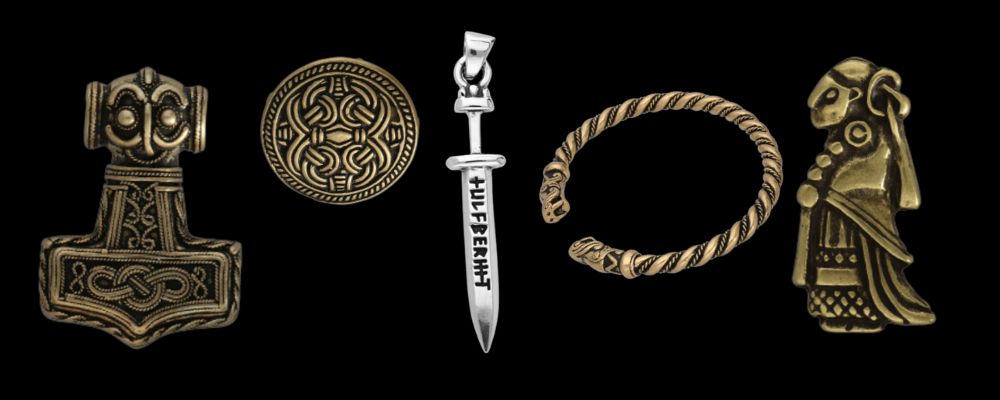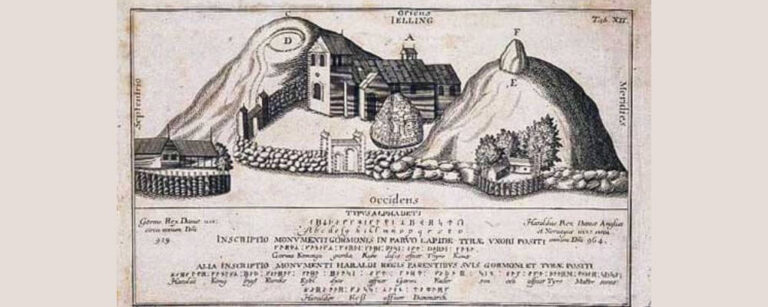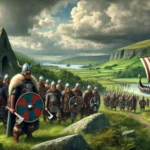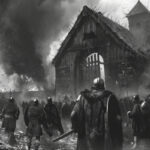
Drawing of what the Jelling site might have looked like based on early archaeological investigations.
Since Viking history feels old, it can often be surprising when we talk about new knowledge and new discoveries. But what we know about the Viking world is constantly evolving.
To uncover Viking history, we rely on fragments of surviving texts and archaeological remains, but understanding what they have to tell us relies on a lot of interpretation. Context and details make a big difference in how we put the pieces of the puzzle together. Small details can change our interpretation and therefore what we think we know about the Viking age.
A new scientific analysis of the Jelling Runestones is changing what we know about politics in 10th-century Denmark, especially the role of Queen Thrya.
Who Was Thrya?
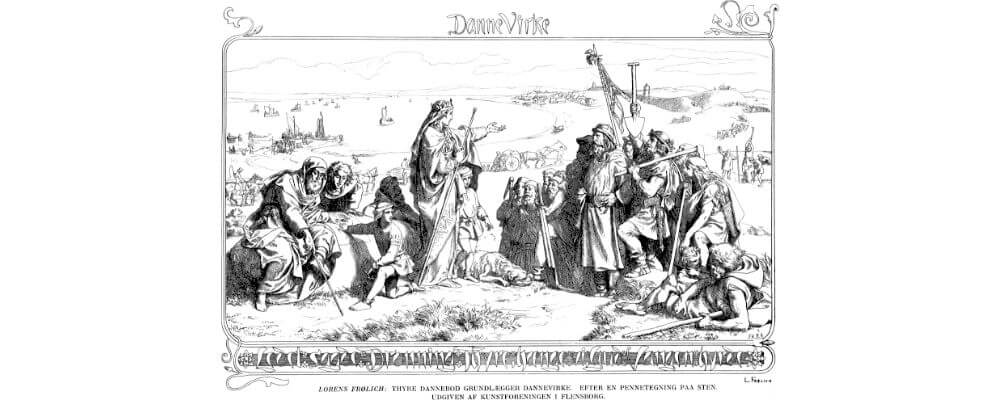
According to several historical texts and the Jelling Runestones, Thrya was the wife of Gorm the Old, who was the first king of a unified Denmark from around AD 936. She is also the mother of Gorm’s successor, Harald Bluetooth. This already makes her an important woman in Danish history.
Depending on which source you read, she was either the daughter of a Jutland noble named Harald Klak or the daughter of an English king who may have been called Aethelred. Some historians suggest that this is King Aethelred of Wessex. But Athelstan is also said to be her brother, which suggests her father was Edward the Elder. But she is not listed in the surviving records of his children.
While the 12th-century historians that record their story, Sven Aggesen and Saxo Grammaticus, don’t have many nice things to say about Gorm, whom they describe as weak and lazy, they describe Thyra as a sturdy queen.
She is described as an advisor to her husband, confident in her ability to steer his political decisions, but also a bit condescending towards her husband.
According to one story, before agreeing to marry Gorm, Thrya demanded that he build a new house and sleep alone in the house for the first three days of winter and tell her what he dreamed on each of those nights. He recounted his dreams at the wedding feast.
He said that on the first night, he dreamed of three white boars emerging from the waters of the sea, eating their fill of grass, and returning the water. On the next night, it was three red boars, and on the next night it was three black boars with giant tusks, and when they returned to the water there was a deafening crash of waves that could be heard throughout Denmark.
She interpreted the dreams as meaning that the country would suffer three cold winters, which killed many ground crops, then three mild winters, and then three winters of war. But the fact that they returned to the water meant that the war would end, and he would be successful thanks to her presence as his advisor.
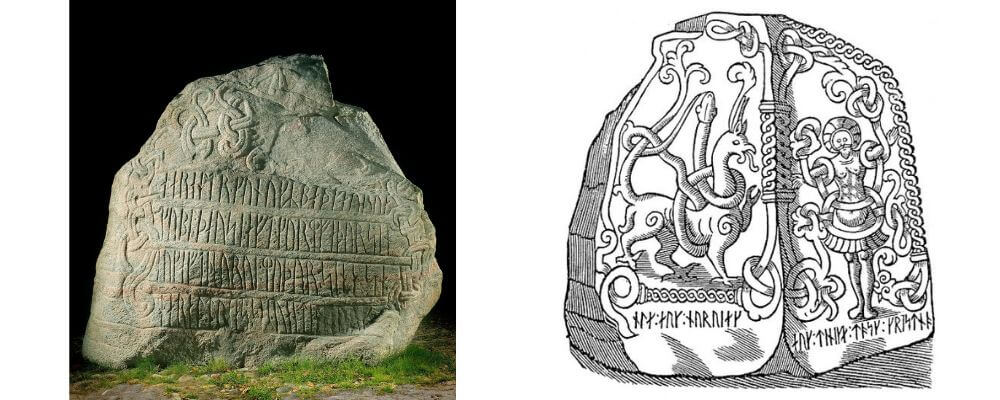
Thyra is also said to have extended the Danevirke, which are linear earthworks that protect Denmark from southern intruders, and to have led an unspecified battle against the Germans.
She seems to have predeceased her husband, as the older of the two Jelling Runestones, dating to around AD 950, was dedicated by Gorm in her honor. The second runestone, dated to around AD 965, was erected by Harald and honors both his parents and his achievement in conquering Denmark and Norway. This second stone is also sometimes called “Denmark’s birth certificate”, as it is the first time that Denmark is described as a unified political entity.
The runestone also honors Harald Bluetooth’s conversion to Christianity and the official conversion of Denmark in the early 960s and has the oldest known image of Jesus Christ from the Scandinavian world.
New Discoveries
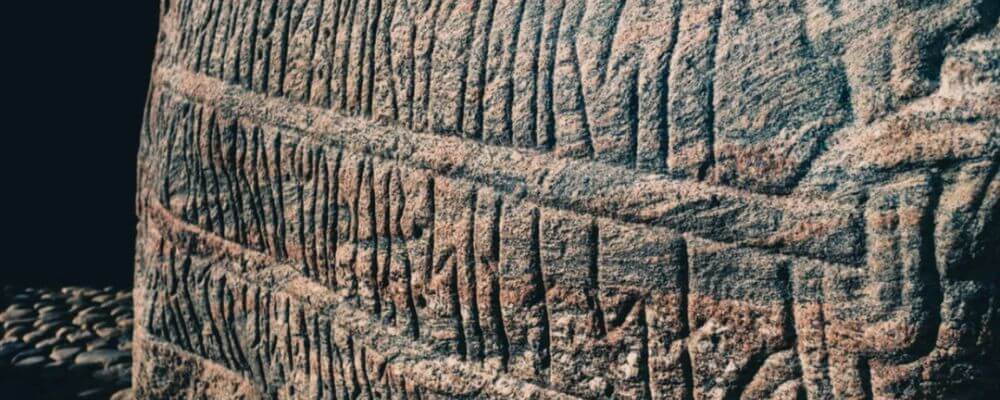
Until recently, it was thought that this was pretty much all the Jelling Runestones had to tell us about Thyra. But a new scientific study published in Antiquity is revealing more.
Of the 260 Runestones surviving from Denmark from around the 18th century to 1100, most date to the 10th century and seem to have been carved by a few rune masters, who often include their names in the inscription. The runestones are usually a dedication from one Viking man to another. Only around 10 dedications to women are known, including those to Thyra.
The fact that the rune masters identify themselves has allowed researchers to identify “signatures” in how they do their runes from the shape of the runes, to the pressure used, to the vocabulary.
Researchers hoped that 3D scans of the weathered Jelling Runestones could help them identify who they may have been made by.
In the case of the larger runestone, the researchers believe that they have been successful and can definitively say that it was carved by someone calling himself Ravnunge-Tue, who produced a number of the runestones found in Jutland dating to his period.
This is interesting because Ravnunge-Tue mentioned a Thyra in two other inscriptions, but researchers have always said that we cannot definitely state that it is the same Thyra. Now it seems very likely that they are.
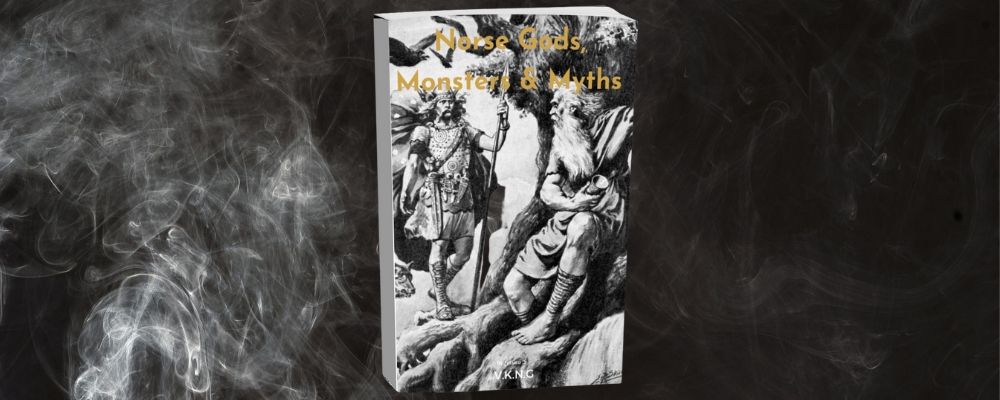
On the Laeborg Runestone, found about 20 miles southeast of Jelling, she is called drottning, which means mistress of lady and is assumed to mean queen. On another runestone called Baekka 1, it says that Ravnunge-Tue made the stop of Thrya.
Assuming that all of these are references to the same Thyra, her name appears on four of the ten surviving runestones referring to women. It also means that she is referenced on more runestones than her husband and son combined. This all suggests that she was a very important political figure.
Her important position is reiterated by the fact that on the Jelling Runestone dedicated by her husband, Thrya is described as Denmark’s Salvation or Denmark’s Strength, suggesting that she was some kind of icon for the fledgling new nation.
Jelling Royal Complex
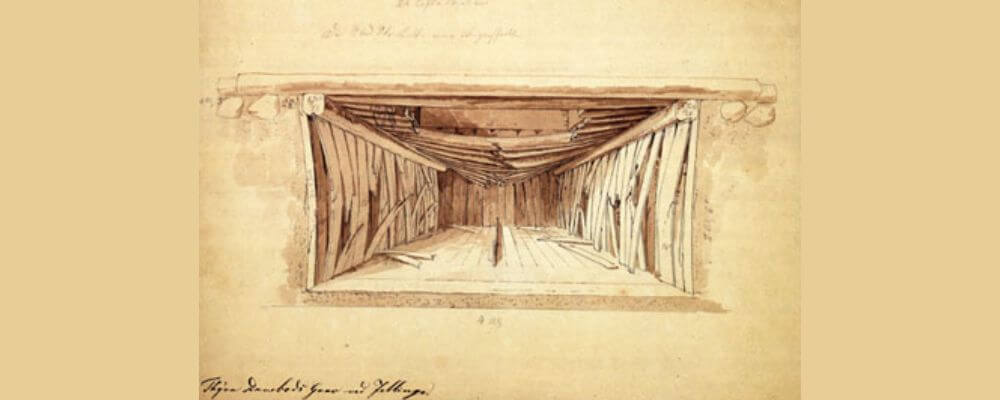
The two Jelling Runestones are found within the royal complex at Jellling, which covers 12.5 hectares and was enclosed by a wooden palisade of trapezoidal plan. Inside the complex were two large mounds, the north mound is traditionally called Thyra’s mound, and the south mound is Gorm’s mound.
The north mound was encircled by a 360-meter-long stone ship setting. This was usually used to mark important burial mounds. Between the two mounds is a church, and the two runestones. While it is believed that the larger and newer of the two runestones, dedicated by Harald, is in its original position, it is thought that the smaller of the two was originally the stern stone of the ship and then moved to be closer to the church.
Excavations of the north mound found a grave chamber prepared, but no corpse inside. The wooden artifacts in the grave suggest that it dates to around AD 960, so perhaps around the time of the death of Gorm.
Excavations beneath the church have revealed a male skeleton, which is also believed to belong to Gorm based on dating, but the evidence is not definitive. This has led scholars to believe that Gorm was initially placed in the northern burial mound and then moved to the church as part of Denmark’s conversion.
The north mound was traditionally associated with Thyra and the south mound with Gorm because the south mound is much larger. It does not contain a burial chamber but may have once been a temple.
Further Discoveries
It seems very likely that further excavations at Jelling have more to reveal. It is already suspected that the stone ship may not encircle only the north mound, but perhaps both, making it enormous.
We can only hope that Jelling reveals more Viking artifacts like the famous Jelling cup, to inspire our modern Viking designs.

